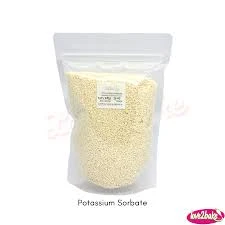
Common Food Preservatives and Their Uses in the Food Industry
Common Preservatives Used in Food
Food preservation has been a crucial aspect of human civilization, allowing us to store and consume food over extended periods. Without effective preservatives, perishable items would spoil quickly, leading to food waste and posing health risks from spoilage. In modern food production, a range of preservatives are utilized to prevent spoilage, maintain flavor, and enhance the overall shelf life of products. This article explores some of the most commonly used preservatives in food, their functions, and safety considerations.
Types of Preservatives
1. Natural Preservatives Natural preservatives, derived from natural sources, have gained popularity as consumers increasingly seek cleaner labels. Common natural preservatives include
- Salt One of the oldest forms of food preservation, salt inhibits the growth of bacteria by drawing moisture out of food. - Sugar Similarly, sugar acts by creating an osmotic environment that discourages microbial growth. It is widely used in jams, jellies, and syrups. - Vinegar Acetic acid in vinegar is effective in preserving pickled products, thanks to its ability to lower pH and inhibit the growth of harmful organisms. - Citric Acid Found in citrus fruits, citric acid is often used in beverages and canned foods to prevent oxidation and spoilage.
2. Synthetic Preservatives To meet the demands of mass production and longer shelf life, synthetic preservatives are commonly employed. Some of the most prevalent examples include
- Sodium Benzoate Effective in acidic foods like salad dressings, carbonated beverages, and fruit juices, sodium benzoate prevents the growth of yeast and bacteria by inhibiting their metabolic processes. - Sulfites (e.g., Sodium Sulfite, Potassium Sulfite) Often used in dried fruits and wine, sulfites act as antioxidants and prevent browning reactions, though they can prompt allergic reactions in some individuals. - BHA and BHT (Butylated Hydroxyanisole and Butylated Hydroxytoluene) These antioxidants are often found in processed foods like snacks, oils, and packaged cereals, as they prevent rancidity by protecting fats from oxidation. - Propionic Acid Commonly used in baked goods, propionic acid inhibits mold and bacteria, thus prolonging the freshness of breads and pastries.
Functions of Preservatives
common preservatives used in food

The primary function of food preservatives is to extend the shelf life of products. This is achieved by
- Inhibiting Microbial Growth Preservatives create an environment that is hostile to bacteria, mold, and yeast, reducing spoilage. - Preventing Oxidation Many preservatives act as antioxidants, preventing oxidation which leads to rancidity and loss of flavor in fatty foods. - Maintaining Color and Flavor Certain preservatives retain the original color and taste of food over time, making them more appealing to consumers.
Safety Considerations
While preservatives play an essential role in food safety and longevity, there are concerns regarding their potential health effects. Here are some key safety considerations
- Regulation Regulatory bodies, such as the FDA (Food and Drug Administration) in the United States, assess and approve the use of preservatives to ensure they are safe for consumption in regulated amounts. - Allergic Reactions Some individuals may experience allergic reactions to specific preservatives, like sulfites or artificial colorings, which can lead to adverse health effects. - Consumer Trends There has been a significant shift towards “clean eating,” where consumers prefer food products with minimal or no artificial additives. This trend has prompted food manufacturers to reformulate products using natural preservatives.
Conclusion
Preservatives are a fundamental aspect of modern food production, playing an essential role in safety, longevity, and quality. While natural preservatives offer a cleaner label option, synthetic preservatives continue to be effective solutions for longer shelf life. Awareness and regulation surrounding these substances are vital to ensure public health and consumer confidence. As consumer preferences evolve, the food industry must balance the need for preservation with the demand for natural, minimally processed ingredients. Understanding the role and implications of food preservatives can help consumers make informed decisions about the foods they choose to eat.
-
Pure Sodium Dichloroisocyanurate Dihydrate | Powerful DisinfectantNewsAug.29,2025
-
Industrial Chemicals: Quality & Purity for Every IndustryNewsAug.28,2025
-
Nitrile Rubber Honoring Strict Production StandardsNewsAug.22,2025
-
Aspartame Ingredients Honoring Food Safety ValuesNewsAug.22,2025
-
Fertilizer for Balanced Plant NutritionNewsAug.22,2025
-
Cyanide Gold Processing with High Purity AdditivesNewsAug.22,2025
-
Formic Acid in Textile Dyeing ApplicationsNewsAug.22,2025
Hebei Tenger Chemical Technology Co., Ltd. focuses on the chemical industry and is committed to the export service of chemical raw materials.
-

view more DiethanolisopropanolamineIn the ever-growing field of chemical solutions, diethanolisopropanolamine (DEIPA) stands out as a versatile and important compound. Due to its unique chemical structure and properties, DEIPA is of interest to various industries including construction, personal care, and agriculture. -

view more TriisopropanolamineTriisopropanolamine (TIPA) alkanol amine substance, is a kind of alcohol amine compound with amino and alcohol hydroxyl, and because of its molecules contains both amino and hydroxyl. -

view more Tetramethyl Thiuram DisulfideTetramethyl thiuram disulfide, also known as TMTD, is a white to light-yellow powder with a distinct sulfur-like odor. It is soluble in organic solvents such as benzene, acetone, and ethyl acetate, making it highly versatile for use in different formulations. TMTD is known for its excellent vulcanization acceleration properties, which makes it a key ingredient in the production of rubber products. Additionally, it acts as an effective fungicide and bactericide, making it valuable in agricultural applications. Its high purity and stability ensure consistent performance, making it a preferred choice for manufacturers across various industries.





